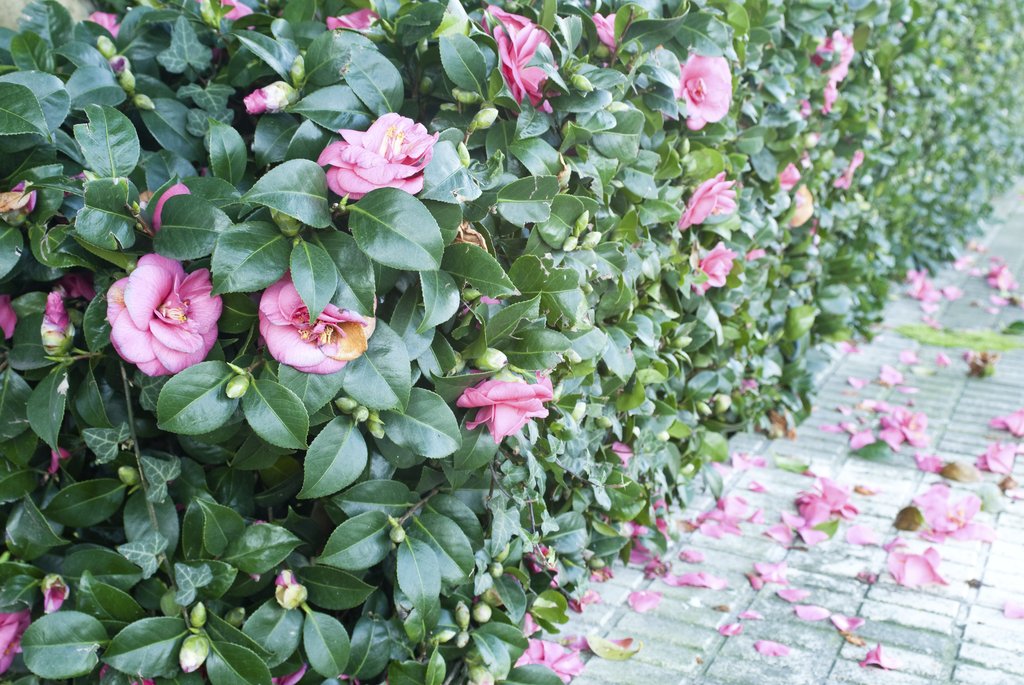If someone were to ask me what my favourite type of flower is, I would say without hesitation the camellia. For a person with a garden full of luscious vegetation, you’d be surprised to learn that I am absolutely in love with something so simple as this plant. This is because the camellia’s flowers are the unique jewel that manages to shine in my chilly garden all through the fall and winter months. Their evergreen foliage can elegantly keep a garden from looking naked and barren this time of the year.
I have to say, even when surrounded by the dense greenery thriving in spring and summer, it’s hard not to notice the beautiful display of camellia plants. Their lustrous colours range from pure white to bright pink and red with some interesting variegations in between.

One of the greatest delights my winter garden brings me is the pink carpet of soft petals under my camellia bush. Not only do these petals warm up a frozen garden, but they can also warm your body too by being made into delicious tea. Planting a bush of one of the many camellia species is perhaps the best decision you can make for your garden. If you do decide to include them, here’s what you need to know.
Conditions Needed to Thrive
Climate – Camellias can grow pretty much anywhere in Australia. They are perfectly fine with a light frost in winter, but need some shade in particularly hot and sunny summer days.
Soil – Camellias like a slightly acidic soil that ranges somewhere between 6.0 and 6.5 pH. Make sure the area you plant them in is moist, but not soggy, and rich with hummus.
Placement – Since they thrive in the shade, they should be planted under tall trees or artificial shade options like awnings and such. Try to avoid placing them around a lot of other plants that would compete with their delicate roots. Because of their high oxygen demands their roots grow pretty shallow which is why under-planting and cultivating around them is something you should avoid.
How to Look After Your Camellias
Camellia plants are generally easy to take care of but require particular attention in the early days after being planted in order to establish a healthy root system. In that period, regular watering is extremely important. After they’ve grown a bit, they don’t need as much watering and can withstand dry spells extremely well. If you want to prevent the roots from freezing over and help retain the moisture levels, be sure to add a 15 cm layer of fresh mulch.
Though they don’t experience a lot of serious problems with pests and diseases, the two main problems that can occur are scale and spider mites. Regularly check under the leaves and if there’s any sign of them, treat them promptly with spray, alcohol or insecticidal soap.
Generally, these flowers have a fresh and shiny appeal even without a fertiliser, but if you do want to go the extra mile and use one make sure it’s specifically made for camellias and used in spring. They don’t require much pruning because they grow slow and easily shed the dead leaves on their own. Trimming a centimetre off the ends of the branches is all you need to keep them neat and tidy.











